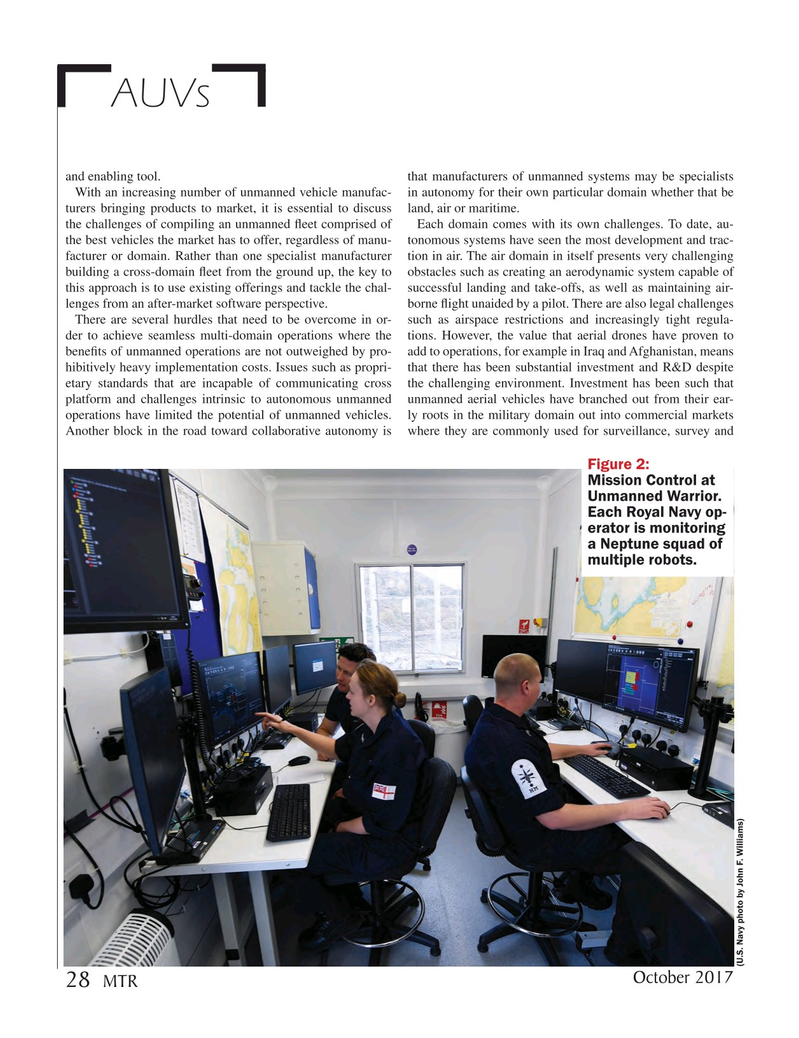
Page 28: of Marine Technology Magazine (October 2017)
AUV Operations
Read this page in Pdf, Flash or Html5 edition of October 2017 Marine Technology Magazine
AUVs and enabling tool. that manufacturers of unmanned systems may be specialists
With an increasing number of unmanned vehicle manufac- in autonomy for their own particular domain whether that be turers bringing products to market, it is essential to discuss land, air or maritime. the challenges of compiling an unmanned ? eet comprised of Each domain comes with its own challenges. To date, au- the best vehicles the market has to offer, regardless of manu- tonomous systems have seen the most development and trac- facturer or domain. Rather than one specialist manufacturer tion in air. The air domain in itself presents very challenging building a cross-domain ? eet from the ground up, the key to obstacles such as creating an aerodynamic system capable of this approach is to use existing offerings and tackle the chal- successful landing and take-offs, as well as maintaining air- lenges from an after-market software perspective. borne ? ight unaided by a pilot. There are also legal challenges
There are several hurdles that need to be overcome in or- such as airspace restrictions and increasingly tight regula- der to achieve seamless multi-domain operations where the tions. However, the value that aerial drones have proven to bene? ts of unmanned operations are not outweighed by pro- add to operations, for example in Iraq and Afghanistan, means hibitively heavy implementation costs. Issues such as propri- that there has been substantial investment and R&D despite etary standards that are incapable of communicating cross the challenging environment. Investment has been such that platform and challenges intrinsic to autonomous unmanned unmanned aerial vehicles have branched out from their ear- operations have limited the potential of unmanned vehicles. ly roots in the military domain out into commercial markets
Another block in the road toward collaborative autonomy is where they are commonly used for surveillance, survey and
Figure 2:
Mission Control at
Unmanned Warrior.
Each Royal Navy op- erator is monitoring a Neptune squad of multiple robots. (U.S. Navy photo by John F. Williams)
October 2017 28 MTR
MTR #8 (18-33).indd 28 MTR #8 (18-33).indd 28 9/28/2017 2:23:00 PM9/28/2017 2:23:00 PM

 27
27

 29
29
